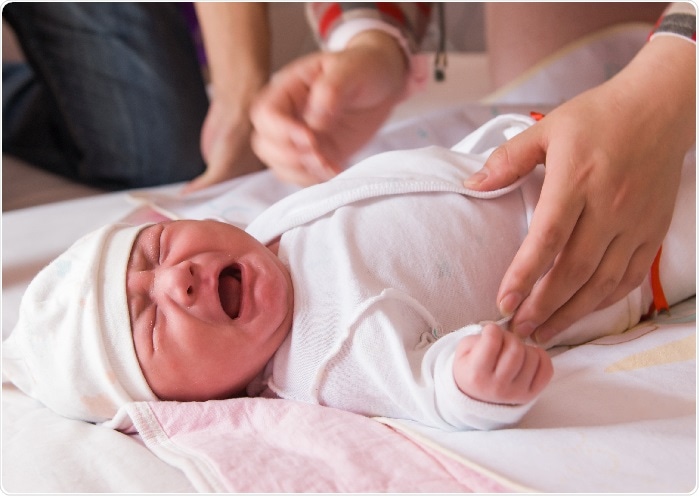Apr 3 2017
According to a new study by the University of Warwick, newborns cry the most in Britain, Canada, Italy, and the Netherlands compared with the rest of the countries in the world. In a study on how much a baby cries in the first three months, psychologists have for the first time, created a universal chart for the normal amount of crying in babies during that period.

Credit: 06photo / Shutterstock.com
Typically, during the first 2 weeks, newborns cry for around 2 hours a day, and this may increase to a maximum of 2 hours and 15 minutes at 6 weeks. Slowly, the crying hours come down to 1 hour 10 minutes at 12 weeks.
Professor Dieter Wolke (Department of Psychology, University of Warwick) has created a universal chart for the amount of crying in infants during their first 12 weeks.
Aggregating the data from multiple studies, he found that infants cried for 2 hours per day during the initial 2 weeks, which became the highest at 2 hours and 15 minutes every day at 6 weeks. However, the crying reduced to a regular 1 hour 10 minutes by the end of 12 weeks. The research involved nearly 8,700 babies across different cultures—from countries such as Germany, Denmark, Japan, Canada, Italy, the Netherlands, and the UK.
Some babies were found to cry for just 30 minutes, while some others cried for more than 5 hours in a day. Colic, defined as crying for more than 3 hours a day for a minimum of three days in a week, was found to be the highest in newborns in the UK (28% of newborns at 1–2 weeks), Canada (34.1% at 3–4 weeks), and Italy (20.9% at 8–9 weeks of age). The lowest figures were found in Denmark (5.5% at 3–4 weeks) and Germany (6.7% at 3–4 weeks).
Currently, the guidelines to determine whether a baby is suffering from colic, is the 1950s derived Wessel criteria. In the past 50 years, childcare and the family unit have transformed vastly across different cultures. Therefore, new universal guiding principles are now required by parents and those involved in the health profession, to evaluate standards of crying in newborns.
Professor Wolke comments that infants vary in the amount of crying during the initial weeks of birth and that these are natural variations. He believes that we could discover more by looking at cultures where there is minimal crying, and understand whether this is due to how parents raise a child or other reasons such as heredity or experiences during pregnancy.
The newly developed universal chart, which states the normal fuss/cry amount in infants across developed countries, will assist health care professionals to assure parents as to whether their baby is crying within the standard expected range during the initial 12 weeks, or is crying excessively, which may require further assessment and additional support for the parents.